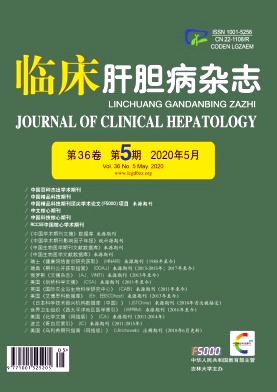Objective To investigate the pathological and biochemical features of each pathological subtype of bile duct injury type of drug-induced liver injury(DILI), and to verify the value and significance of pathological classification of DILI.Methods A retrospective analysis was performed for the clinical data of 112 patients with bile duct injury type of DILI who were admitted to Shijiazhuang Fifth Hospital from January 2006 to January 2016 and China-Japan Friendship Hospital from October 2003 to June 2014. According to the pathological subtype, the patients were divided into mixed hepatitis group with 40 patients, cholestatic hepatitis group with 40 patients, and simple cholestasis group with 32 patients, and the three groups were compared in terms of types of drugs used, course of disease, R value, and peak values,changing trend, time to peak, and recovery time of liver biochemical indices. The independent-samples Kruskal-WallisHtest was used for comparison of continuous data between multiple groups, and the Mann-WhitneyUtest was used for further comparison between two groups; the chi-square test was used for comparison of categorical data between groups.Results Among the drugs inducing DILI, traditional Chinese medicine and Western medicine each accounted for half of the cases of bile duct injury type of DILI. Traditional Chinese medicine mainly included the drugs for osteoarthropathy, intervertebral disc bulge, alopecia, calculus-removing and cholagogic treatment,Yang-tonifying therapy, and skin diseases; 26 patients(65%) in the cholestatic hepatitis group had DILI caused by traditional Chinese medicine, while 16 patients(40%) in the mixed hepatitis group and 13(40.6%) in the simple cholestasis group had such DILI. Antibiotics and antipyretic and analgesic drugs were the most common Western medicines for DILI. The mixed hepatitis group had the highest peak values of ALT and AST and R value, followed by the cholestatic hepatitis group and the simple hepatitis group (χ2 =54. 77, 44. 21, and5195, allP< 0. 001), and there were no significant differences in the peak values of the other liver biochemical parameters between the three groups(allP> 0. 05). In the mixed hepatitis group and the cholestatic hepatitis group, the time to peak of TBil was longer than that of ALT. There were no significant differences in course of disease, time to peak of liver biochemical parameters, and recovery time between the three groups(allP> 0. 05).Conclusion Each subtype of bile duct injury type of DILI has unique clinical and biochemical features,and an understanding of such features may help to accurately judge clinical typing, pathological changes of targets, and degree of injury.







 DownLoad:
DownLoad: